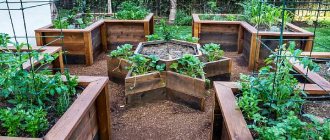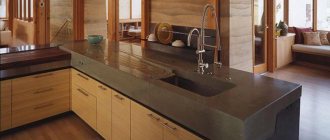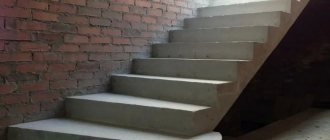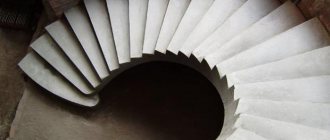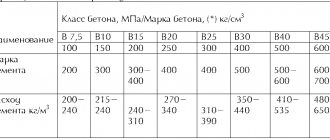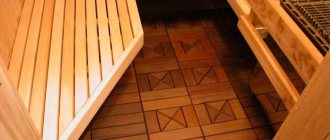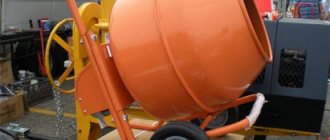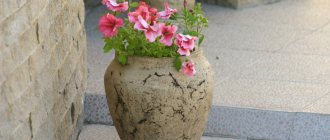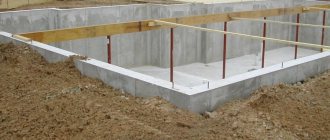concrete bench
Do you want reliable garden furniture that will last for many years? Then there is nothing to think about - you need to make a concrete bench with your own hands . Concrete has exceptional strength and durability. The sun, rain, frost and wind that destroy wood are not scary for a concrete bench. Moreover, the concrete structure requires virtually no maintenance.
You can choose a simpler option. With just a few cinder blocks and lumber, you can make a bench out of blocks of any length and height. The job only takes an hour and looks great. Although concrete blocks are typically used in construction, they are actually aesthetically very versatile. Climbing plants will soften rough edges, and artistic coloring will create a chic look. Moreover, concrete blocks are well suited for outdoor use; They are extremely durable and withstand all weather conditions well.
What is the difference between concrete benches for the city and benches for the country house?
Urban concrete benches are made industrially and are replicated in large quantities to order from the municipality. Their prices are low and they can easily be used for use in personal gardens.
But due to the heavy weight, there are certain problems in delivering the product to the site. The large weight of the benches is determined by the requirement for structural strength and resistance to vandalism.
Typically, urban concrete benches have a more formal, classic look and therefore a somewhat limited choice in design.
The following photographs show concrete benches that can be found in public urban places.
The most common bench length is 2m. This surface can accommodate 4 people at the same time. Moreover, the structure can withstand weight up to 300 kg.
The legs of concrete benches often have a pattern on their surface that is aesthetic in nature. Instead of a picture, some kind of logo may be applied.
Most often, the concrete is gray in color, corresponding to the color of the Portland cement binder. Concrete is painted on top very rarely, as the paint will not last long.
The bench legs can be attached to the surface on which they are installed using anchor bolts. This provides additional protection against movement and theft.
Concrete benches for the city are made from high-quality and modern materials using high-quality cements and washed fillers. This allows you to obtain the most durable and durable products.
Thick metal wire is usually used as reinforcement.
The seat of concrete benches is often made of wood. In this case, thick boards are used - 50-60 mm. This prevents the seats from sagging even when placing a lot of weight on the benches.
Wood can be painted any color. The wood is first impregnated with an antiseptic.
Such concrete benches can be installed on asphalt, paving slabs, concrete surfaces, or simply on well-compacted earth.
Making benches with concrete legs
The technology for producing street benches has been worked out to the smallest detail and can be applied even at home using household tools.
Concrete benches are made using the following method:
- Drawing up a project. The package of documents consists of a sketch, drawings, and calculations of building materials.
- Preparing the flask or steel molds. First, based on the diagrams, clay, plaster or foam mock-ups of supports are made by hand. Then containers for pouring cement mortar are made according to the template.
- Mixing the solution. Sand, small crushed stone, cement and water are taken in a ratio of 3:3:1:2. Plasticizers are added no more than 0.5% of the volume of the mixture. Pigments and mineral chips are poured and mixed before pouring water into the container.
- If there is a possibility that the concrete bench may be stolen, a frame is made with protruding reinforcement for subsequent welding to an anchor embedded in the ground.
- Bars are attached to the form to form recesses into which the bars for the backs and seats will be placed.
- The flasks are installed with the supporting part facing up. The pouring of the solution begins. This must be done continuously so that the supports become monolithic. As the mixture is added, air bubbles are removed from it. For this, a steel pin or submersible electric vibrator is used.
- Excess solution is removed with a spatula. The base of the supports is being leveled. It takes at least 14 days for concrete to gain strength.
- The blocks are removed. Irregularities are ground off and the surface is polished. 2-3 layers of deep penetration impregnation are applied to it.
- The concrete bench is transported to the place where it will permanently stand. After securing the supports, boards are laid and fixed on them.
It is better to paint and process the fragments of the backs and seats in advance, since after installation it is inconvenient to do this and there is a risk of staining the supports with paint.
Bench with concrete legs
Products of this type belong to the category of budget products, as they are easy to manufacture and install. In addition, their production requires a minimal amount of material. Since each unit weighs between 150 kg and 250 kg, loading and unloading is carried out using hinged hinges, which are installed on the back or bottom of the supports.
Installation of products can be carried out according to the following options:
On a rigid base (concrete, asphalt, paving slabs):
- Markings are carried out and places for the legs are marked.
- The lower part of the supports is cleared of protruding fragments, and the transport loops are cut off.
- The legs are placed in place, aligned vertically and horizontally.
- Pre-treated boards or WPC panels are placed in the cavities.
- The timber is being fastened. For this purpose, bolts without notches on the heads are used so that they cannot be unscrewed without a special tool.
On the ground:
- Removing the top layer of turf and fertile soil to a depth of 30 cm. The pits are dug 5 cm wider than the base on each side.
- Cleaning the bottom of pits from stones and plant roots. Leveling and compacting.
- Laying geotextile fabric. It is needed to prevent the soil from being washed away from under the supports and to prevent the growth of grass and bushes.
- Filling pits with sand, wetting it, leveling it and compacting it.
- Installation and alignment of supports, securing bars, checking the product for strength and stability.
Concrete street benches are distinguished by their lightness and elegance of design. They do not retain water, snow and fallen leaves. Sitting on them is convenient and comfortable due to air circulation between the boards.
The products are easy to disassemble for moving to a new location, maintenance or routine repairs. At home, the supports are transported on a utility wheelbarrow.
Concrete slab bench
Slabs of 40x40 cm and 40x80 cm are excellent for making garden benches. The material is used as side supports for seats and backrests. The products are strong and massive enough to stand stably on the ribs, withstanding vertical and lateral loads.
A good solution is to combine a square and rectangular slab. The result is a coal structure, inside which the boards are laid.
First, chamfers are made in the holes so that the heads of the hardware are recessed into the wood. The bars are fastened with anchor bolts in holes made with a diamond core.
Another option to make concrete benches from slabs is to lay them flat on top of each other. The good thing about this method is that there is no need to prepare a base for the supports. Due to the large area of the slabs, they can be laid directly on the ground, having previously eliminated unevenness on it.
The slabs are connected to each other with cement mortar, liquid nails or other synthetic glue. Another advantage is that holes in the slabs can be made with a hammer drill, which is much cheaper than a diamond tool.
Such supports are not very presentable, but this defect can be easily eliminated on your own. Surfaces are sanded and polished and then treated with a colored primer. This will highlight and highlight the beauty of the stone. The cracks are sealed with mastic matching the color of the concrete or in a contrasting color.
Concrete block bench
Precast concrete products in the form of blocks can be purchased or made independently, which will be cheaper and eliminate the need to rent freight transport to transport them from the store to the site.
The choice depends on the availability of free time and the chosen design of supports. If their range on sale is limited, then you can make a block of any shape and size with your own hands. In addition, by varying the composition of the concrete, the solution becomes heavier or lighter, and plasticity and hydrophobic properties are added to it.
There are the following methods for making block benches:
- Solid. The fragments are laid out on the surface in accordance with the drawn up project. It can be a straight line, an angle, an arc, a wave or the letter “P”. The stones are connected to each other with glue or cement mortar. If the soil is unstable, through drilling and installation of screeds is carried out. The flooring is laid on the top of the structure.
- Hollow. Here, U-shaped products are used, from which an underground box for laying pipelines is built. Depending on the parameters, parts are laid on edge or with supports down. After this, the concrete is finished with wooden boards or WPC panels.
- Separated. In this case, the design of the bench is similar to the design of benches with legs. Monolithic blocks in the shape of a cube or parallelepiped are used as load-bearing supports for the boards. To reduce cement consumption and reduce the weight of the product, expanded clay or foam balls are added to the solution.
When making supports, it is advisable to use reinforcement. This is necessary so that the metal compensates for the vertical loads on the concrete that arise during the operation of the benches. The reinforcement should be placed at the bottom of the products, where the bending reaches its maximum.
Advantages of concrete benches
Benches are an important component of park architecture. They are installed near large shopping centers, on observation platforms, in car parking areas and many other places.
Concrete benches are not only means of relaxation, they decorate the area, complement the design and have many advantages over other materials:
– concrete does not corrode;
– products have a long service life;
– frost-resistant;
– there is no interest on the part of “lovers” of scrap metal;
– have aesthetics and original design.
Product manufacturing and surface treatment options
| Natural concrete | Painted concrete | “Chess” marble chips | "Moscow" quartz sand | "Berlin" pebbles | "Stockholm" granite | "Istanbul" gabbro-diabase |
1
Advantages of landscape architecture elements
- Resistance to fire, precipitation, ultraviolet radiation and other climatic factors: the wood used in production is sanded, treated with an oil antiseptic, fire and moisture retardant;
- Components are added to the plastic solution to enhance strength and frost resistance.
In addition, they are not at risk of corrosion, the spread of fungus and mold. As such, they also do not require maintenance or seasonal “renewal”.
Thus, these models are deservedly popular and in high demand, which is also facilitated by their price. The fact is that the process of producing concrete benches (including those with imitation stone) is quite simple and does not involve large financial costs. Therefore, the final prices are quite attractive for buyers.
How to prepare architectural concrete?
To prepare architectural concrete, you need a light shade of concrete mixture (grade M-500, GOST 30515-2013) [2]. The mixture must be sifted. To create a beautiful visual effect, various processing techniques are then used.
How to make a bench made of architectural concrete more impressive:
— We use spraying . For the vertical elements and legs of the bench, you can use acid dye to set an interesting tone.
— Don’t forget about screen painting . There are ready-made templates, one of the popular ones is imitation brickwork. If you need an unusual option, then the template is made independently.
— Stamping of vertical and horizontal elements . You will need a silicone or rubber matrix, which is coated with moisture-resistant additives or coloring pigments.
Principles for installing a concrete bench
The choice of one technology or another is determined by the type of surface where installation is planned. Based on this, the possibilities are:
- concreting or anchoring (the most reliable method - as they say, for centuries);
- placement on the ground: first, holes are dug approximately 10 cm deep,
- then they are covered with gravel (the layer thickness is usually 7-8 cm) and compacted;
All work is carried out in compliance with safety requirements and taking into account the characteristics of the landscaped area. Each garden/park concrete bench must comply with GOST. In frequently visited public places, laconic models with a backrest, comfortable for most people, are most appropriate.
Today, MAFs have become an integral part of street space in both megacities and small towns. We are ready to offer our clients a wide range of these products and favorable terms of cooperation. You can buy a concrete bench from us with careful and prompt delivery to any destination, for which only specialized vehicles are used.
